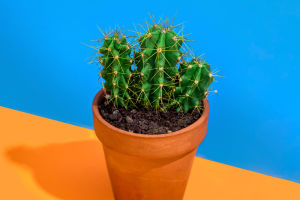Flower cultivation is not just a delightful hobby; it’s a rewarding practice that can transform any garden into a vibrant paradise.
Whether you’re a seasoned gardener or a beginner, understanding the basics of flower cultivation can enhance your gardening experience and yield stunning blooms.
Why Cultivate Flowers?
1. Aesthetic Appeal
One of the primary reasons for cultivating flowers is their aesthetic appeal. Flowers add color, fragrance, and beauty to any space, creating a serene atmosphere. From vibrant sunflowers to delicate roses, flowers can be selected to match any design theme or personal taste. A well-maintained flower garden can be a source of pride and joy, inviting admiration from family and friends.
2. Environmental Benefits
Cultivating flowers also has significant environmental benefits. Flowers attract pollinators like bees, butterflies, and hummingbirds, which are essential for the ecosystem. By planting a diverse range of flowers, you contribute to the biodiversity of your local area. Additionally, flowers can improve air quality and provide habitats for various species, making your garden a haven for wildlife.
3. Therapeutic Benefits
Gardening, particularly flower cultivation, has therapeutic effects that can enhance mental well-being. Spending time in nature, tending to plants, and witnessing their growth can reduce stress and anxiety. The act of nurturing flowers fosters a sense of accomplishment and mindfulness, making it an excellent way to unwind and connect with the environment.
Steps to Successful Flower Cultivation
1. Choosing the Right Flowers
Start by selecting flowers suited to your climate and soil type. Research native plants, as they typically require less maintenance and are more resilient. Consider the amount of sunlight your garden receives and choose flowers accordingly—some thrive in full sun, while others prefer partial shade.
2. Preparing the Soil
Healthy soil is crucial for thriving flowers. Begin by testing your soil’s pH and nutrient levels. Amend the soil with organic matter, such as compost or well-rotted manure, to improve fertility and drainage. Ensure the soil is loose and well-aerated to promote root growth.
3. Planting and Maintenance
When planting, follow the specific spacing and depth recommendations for each flower type. Water your flowers regularly, especially during dry spells, and apply mulch to retain moisture and suppress weeds. Deadheading (removing spent blooms) encourages new growth and prolongs flowering. Fertilizing periodically with a balanced fertilizer can also boost blooms.
Lykkers, flower cultivation is a fulfilling and enjoyable endeavor that brings beauty and joy to our lives. By choosing the right flowers, preparing your soil, and maintaining your garden with care, you can create a stunning floral display that enhances your outdoor space. Whether for aesthetic pleasure or environmental benefit, cultivating flowers is a rewarding journey worth pursuing!
10 Secrets for a Year-Round Blooming Garden
Manu Garden Tricks


